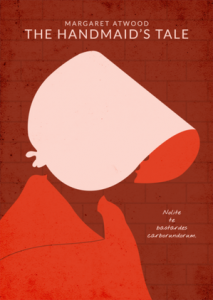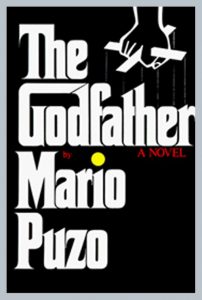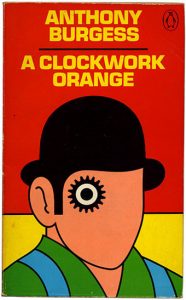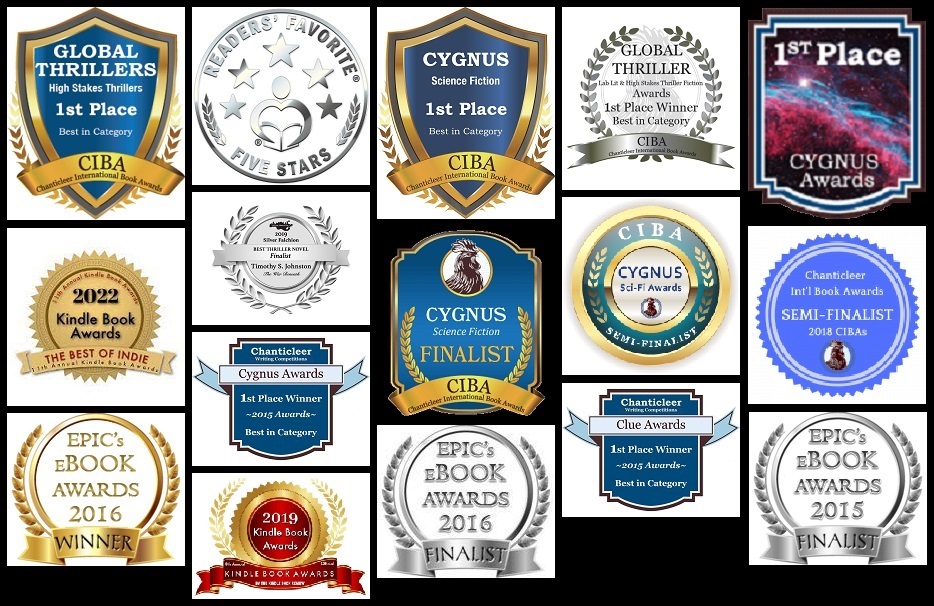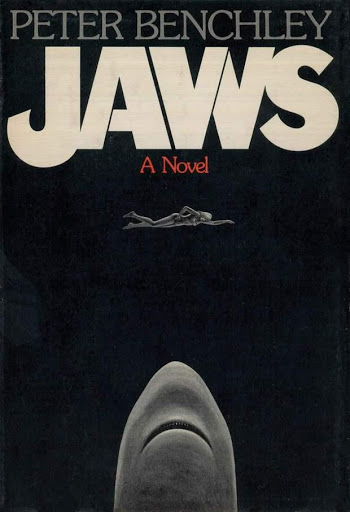 The Most Iconic Book Covers in the Thriller/Suspense/SF Genres
The Most Iconic Book Covers in the Thriller/Suspense/SF Genres
I’ve recently been re-reading some classic novels from my younger days, and I realized that some of their covers might now be considered iconic — some so notable that the movie marketing machines actually copied the book cover, further cementing the image in our minds. Here are some of those books. Please note that, as always, I view things through the lens of my favorite genres: thriller, suspense, science fiction, horror, and mystery. Any covers that fell through the cracks might be in the “Honorable Mentions” section below my list.
— — —
Jaws by Peter Benchley
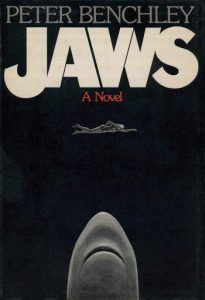
This book cover might be the most iconic, ever. There is simply no doubting the subject or threat in the book. The scale of the fish is shocking, and the fear that many hold of what lies below them in the darkness — the dark water fear is either Thalassophobia (fear of the deep ocean) or Hydroskourophobia (fear of deep, dark water) — is very real. People were scared to swim after reading Jaws or watching the movie. Both book and movie are fantastic in their own ways. The marketing for the movie copied the cover. The poster is pictured here:
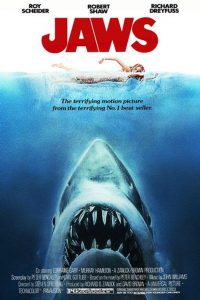
The movie poster
And later, reprints of the book blended both the original cover and the movie poster into:
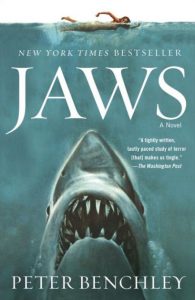
— — —
Coma by Robin Cook
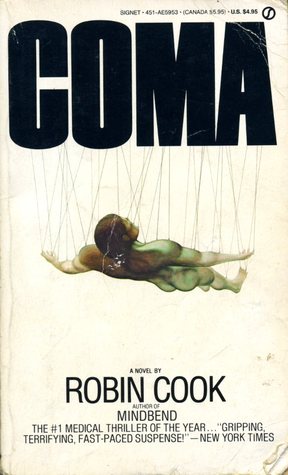
This is a marvelous book, a medical mystery/thriller that every adult seemed to be reading in the late 70s (around the same time as Jaws.) Coma really started the medical thriller genre. Robin Cook is a master of suspense, writing about a topic that people naturally fear: a visit to the hospital. We are at our most vulnerable in these instances — naked in a flimsy medical gown and lying on a gurney, anxious about impending pain, discomfort, and embarrassment — and Robin Cook took great advantage of this and scared the crap out of readers. He is a doctor in real life, so a thread of reality permeates his mysteries that make them exceptionally tense. Coma’s cover is notable, and the movie marketing team used the image on their poster, seen below.
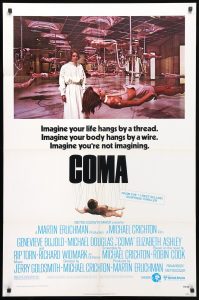
— — —
Jurassic Park by Michael Crichton

Michael Crichton quickly became the king of the technothriller after this book. (I personally feel that Sphere is his best.) If you were conscious in the 90s and ever visited a bookstore, the image of the T-Rex skeleton in black on the white background is likely ingrained in your memory. What a book! It’s much darker than the film. Both are great in their own ways, just like Jaws, the other Spielberg movie in this list. The movie poster has become notable as well; it’s the same concept with different coloring (black on red instead of black on white.)

— — —
Zodiac by Robert Graysmith
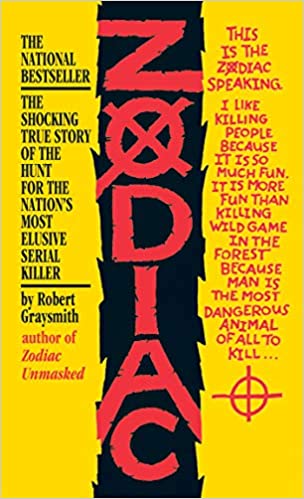
I have a memory of this cover in a bookstore in 1986. There was a rack of these books and it was so notable that I can still picture it today. I was sixteen at the time. Much later, in David Fincher’s movie, there is an image of these books on a swivel rack, I believe in an airport, that resonated with me. Everyone over the age of forty has likely seen this cover. The book either seemed to be everywhere, or the black, red, and yellow was so distinctive that I just noticed it at the time. The movie, however, did not follow or emulate it in any way. I’m unsure why. When the book appeared in the film, the audience collectively recognized it.

From Fincher’s Zodiac.
— — —
Psycho by Robert Bloch
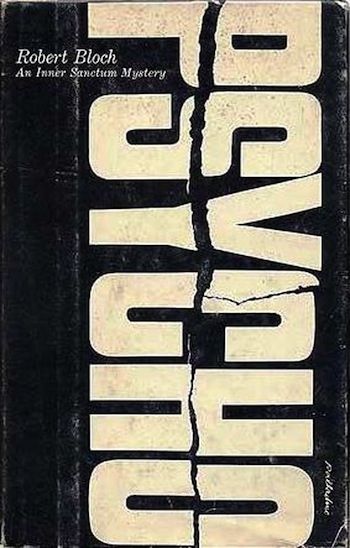
I have not read the book, but the cover is very well known. Apparently the artist simply created the letters and then ripped them in half. It was a simple way to demonstrate the homicidal break that Norman Bates suffered, but it is visual and notable. Alfred Hitchcock purchased the font so he could use it in the film’s marketing campaign (seen below). The cover also influenced the movie’s opening credit sequence of letters being pulled apart.
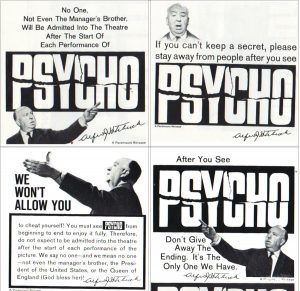
Hitchcock imploring people not to give away spoilers.

— — —
The Handmaid’s Tale by Margaret Atwood
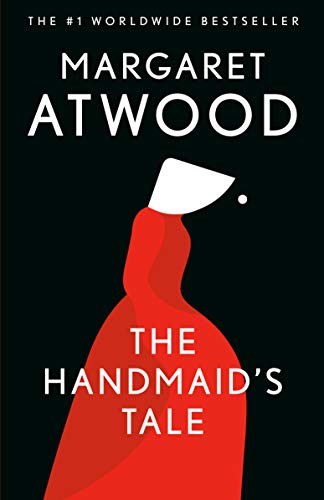
An iconic book cover. Canadian writer Margaret Atwood’s story incorporates the color red as an important metaphor, and the book cover makes use of it across many iterations. Here are some others:

— — —
Lord of the Flies by William Golding
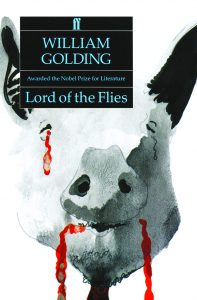
Following WWII, there were a few novels written about the rise of totalitarianism and a warning to always be vigilant against it. After all, the period of the 30s and 40s saw Franco, Hitler, Mussolini, Hirohito/Tojo, and Stalin and a death count exceeding seventy million people. Novels about totalitarianism/fascism published soon after the war include Orwell’s 1984 and Animal Farm, and Golding’s Lord of the Flies. This novel has had a variety of covers over the years, but the image of the pig’s head is the most common. This book is one of the most read novels in schools in English-speaking countries. I’m sure you’ve seen it. Here are a few different varieties of the same image.

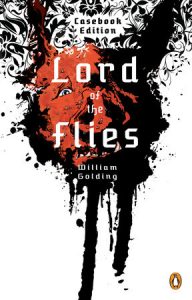
— — —
1984 by George Orwell

And this brings us to Orwell’s 1984. I read it in school, and although the cover has changed over the years, this is the one that I feel is most iconic. There are many versions (pictured below), but the vast majority feature the eye as a metaphor for Big Brother and his ability to see all, including your thoughts.
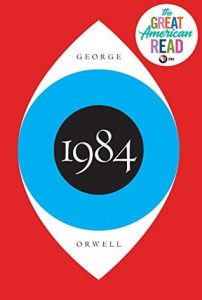
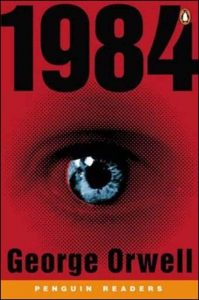
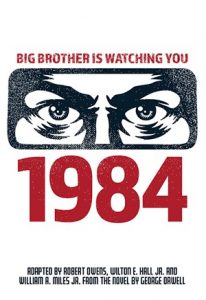
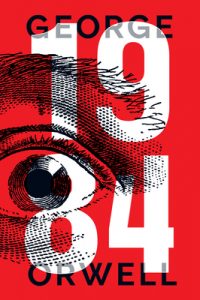
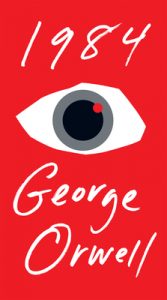
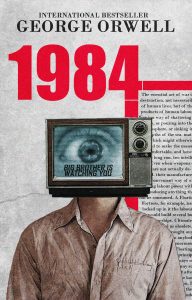
— — —
The Hobbit by J.R.R. Tolkien
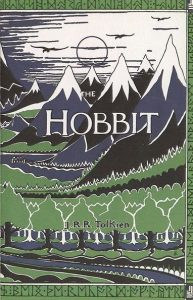
What an iconic cover! Drawn by J.R.R. Tolkien himself, it has changed only slightly through the years (for example the red added to the sun). There have been other versions of the cover, but this is the one most associated with the book.

Later, the sun was made red. It was more expensive at the time to add the color. I believe Tolkien intended the dragons to also be red.
— — —
Gateway by Frederik Pohl

The cover features Boris Vallejo’s art and it has remained intact in many iterations/printings of the book. Gateway heavily influenced me. I read it when I was 15 and it likely cemented my desire to write SF. I find Frederik Pohl’s friendship with Isaac Asimov interesting (they bounced ideas off each other) and his Undersea Trilogy influenced my own Rise of Oceania series. Gateway is an incredible novel about one man’s quest for riches and the resulting guilt that plagues him for the rest of his life. The mystery of what he did to acquire his fortune permeates the entire book, and you have to make it to the end to find out what happened. It’s the driving force in the novel. My blog is named after this book because of how it influenced me.
For me, this cover is iconic. Note that even after multiple printings, the art remains the same.
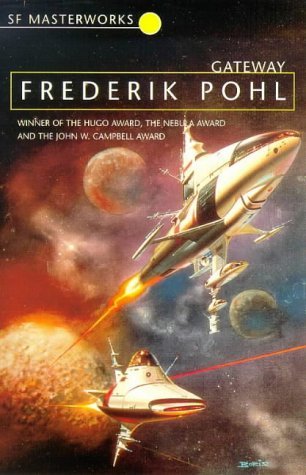

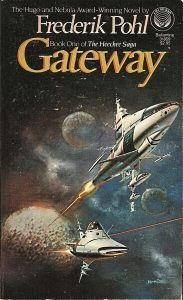
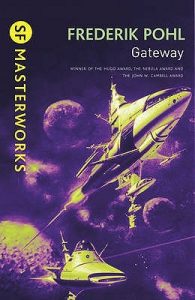
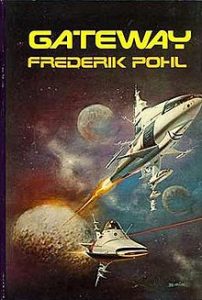
— — —
2001 A Space Odyssey by Arthur C. Clarke
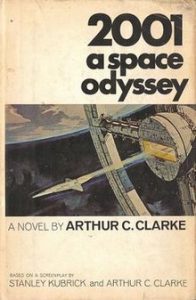
What a cover. It captured a young boy’s imagination, especially one interested in outer space and science fiction stories. I am, of course, referring to myself. After reading 2001, I soon read other works by Arthur C. Clarke, including Rendezvous with Rama, 2010: Odyssey Two, and Childhood’s End.
— — —
Ender’s Game by Orson Scott Card

The image pictured has remained fairly consistent over the years, but there have been some printings featuring the main character on the cover. Also, the recent movie has resulted in a new cover featuring the film’s cast (i.e. Harrison Ford). This is a book widely read by teenagers. The protagonist, who is only 6 years old at the start of the novel, behaves almost as an adult in a very traumatic setting, and the story — training young soldiers for an imminent alien threat — is quite compelling.
— — —
Foundation by Isaac Asimov
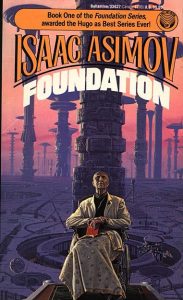
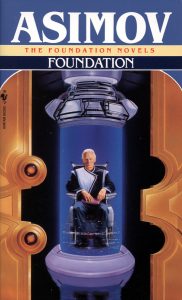 There have been many, many iterations of this cover, but these are the two most notable ones for me. I could write thousands of words here about Asimov … but I’ll save that for a later post. This is an incredible series and it will soon appear on Apple TV+, but their marketing did not retain the imagery from these covers. Harry Seldon is a larger-than-life figure in the saga, and Jared Harris portrays him in the new Apple series, coming later this year. It’s fantastic casting. Here is their poster, and Harry Seldon is not there:
There have been many, many iterations of this cover, but these are the two most notable ones for me. I could write thousands of words here about Asimov … but I’ll save that for a later post. This is an incredible series and it will soon appear on Apple TV+, but their marketing did not retain the imagery from these covers. Harry Seldon is a larger-than-life figure in the saga, and Jared Harris portrays him in the new Apple series, coming later this year. It’s fantastic casting. Here is their poster, and Harry Seldon is not there:

If you are interested, here is the trailer:
(CONTINUE BELOW TO SEE HONORABLE MENTIONS)
— — —
Honorable Mentions
These are not exactly in my genre, but during research for this post I came across these books that also have iconic covers and I wanted to mention them here. The Godfather cover was actually used for the film as well, which further ingrained it in our consciousness.
The Godfather by Mario Puzo
A Clockwork Orange by Anthony Burgess
Catch-22 by Joseph Heller
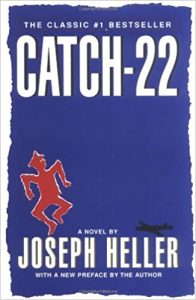
Follow TSJ on Facebook
Follow TSJ on Twitter
Follow TSJ on Instagram
Enter TSJ’s contests here
Enter your email into the widget at the right to follow TSJ’s blog Life After Gateway.
Watch THE EXCITING BOOK TRAILER HERE!
“The Shadow of War is a slambang thriller set in an all-too-plausible future. Fans of Tom Clancy and Michael Crichton will be spellbound.” — Robert J. Sawyer, Hugo Award-winning author of The Oppenheimer Alternative
“Johnston presents readers with a diverse set of characters, along with a complicated world for them to navigate. The novel shines when describing the technology, as when the characters discuss the beam weapon, nicknamed ‘The Water Pick’ … Fans of high-tech SF will enjoy the concepts and worldbuilding here …” — Kirkus Reviews
“Any good heist consists of three components: a team, a plan and something worth stealing. ‘The Shadow Of War’, the fifth novel in Timothy S. Johnston’s ‘Rise Of Oceania’ series, has all three … Johnston has written a thriller with hot-off-the-presses technology, edge-of-your-seat moments, separated into heart-pounding seconds, and characters who don’t always do what they’re supposed to.” — SFcrowsnest
“Johnston weaves an engrossing tale … it’s easy to highly recommend The Shadow of War as an outstanding and gripping sci-fi technothriller.” — Midwest Book Review
“I need to see Oceania on the big screen!” — FIVE STARS from Readers’ Favorite
“…a terrific read! Smart, thrilling, intriguingly plotted and, like all previous entries in Johnston’s ‘Rise of Oceania’ series, A-level entertainment. And that opening chapter—WOW! Page-turner is an understatement.” — Michael Libling, author of Hollywood North: A Novel in Six Reels and The Serial Killer’s Son Takes A Wife
———
A BLANKET OF STEEL IS COMING FALL 2023! WATCH THIS SPACE!
TSJ’s Awards
Follow TSJ on Facebook
Follow TSJ on Twitter
Follow TSJ on Instagram
Enter TSJ’s contests here
Enter your email into the widget at the right to follow TSJ’s blog Life After Gateway.
THE WAR BENEATH: FIRST PLACE 2018 GLOBAL THRILLER Action / Adventure Category Winner, 2019 Silver Falchion Award Finalist, 2018 CLUE Award Semi-Finalist, 2019 Kindle Book Awards Semi-Finalist, & 2019 CYGNUS Award Shortlister
THE SAVAGE DEEPS: FIRST PLACE 2020 CYGNUS Award Winner, 2019 GLOBAL THRILLER Awards Finalist, 2022 Kindle Book Awards Semi-Finalist; 2019 CLUE Award Shortlister
FATAL DEPTH: FIRST PLACE 2021 GLOBAL THRILLER Award Winner, 2022 Silver Falchion Award Finalist (Best Action Adventure), 2021 CYGNUS Award Semi-Finalist
Praise for THE WAR BENEATH
“If you’re looking for a techno-thriller combining Ian Fleming, Tom Clancy and John Le Carré, The War Beneath will satisfy … a ripping good yarn, a genuine page-turner.” — Amazing Stories
“One very riveting, intelligent read!” — Readers’ Favorite
“If you like novels like The Hunt for Red October and Red Storm Rising,
you will certainly enjoy The War Beneath.” — A Thrill A Week
“If you’re here for thrills, the book will deliver.” — The Cambridge Geek
“… an engaging world that is highly believable …” — The Future Fire
“This is a tense, gripping science fiction/thriller of which Tom Clancy might well be proud . . . When I say it is gripping, that is the simple truth.” — Ardath Mayhar
“… a thrill ride from beginning to end …” — SFcrowsnest
“… if you like Clancy and le Carré with a hint of Forsyth thrown in,
you’ll love The War Beneath.” — Colonel Jonathan P. Brazee (RET),
2017 Nebula Award & 2018 Dragon Award Finalist
“Fast-paced, good old-fashioned Cold War espionage … a great escape!” — The Minerva Reader






